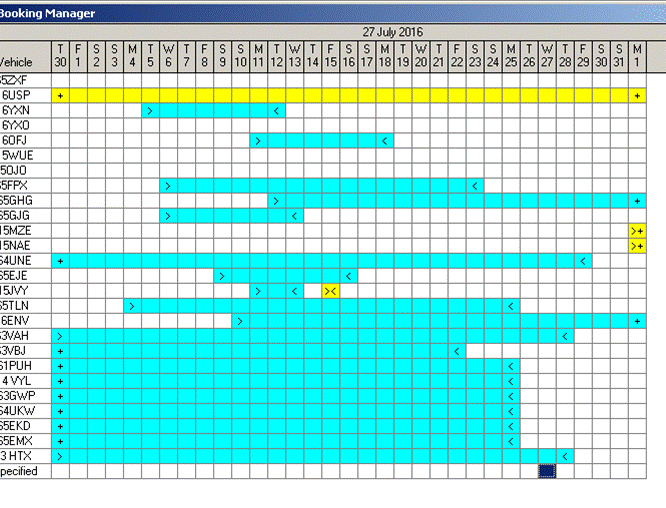Afternoon all,
I'm building a bespoke car rental system to replace a 20 year old piece of software (yep, 20!), and the one feature that i've been asked to keep in is our car view calendar, which enables us to see at a glance where vehicles are, if they're booked, etc. While i would have no problem in filling up a calendar with the necessary queries to populate it's view, i have no clue on how to even start to display it. Here's the current one we use, and i would appreciate any help in recreating it's look if anybody has any suggestions!
 [/URL]
[/URL]
TIA
Barry
I'm building a bespoke car rental system to replace a 20 year old piece of software (yep, 20!), and the one feature that i've been asked to keep in is our car view calendar, which enables us to see at a glance where vehicles are, if they're booked, etc. While i would have no problem in filling up a calendar with the necessary queries to populate it's view, i have no clue on how to even start to display it. Here's the current one we use, and i would appreciate any help in recreating it's look if anybody has any suggestions!

TIA
Barry

